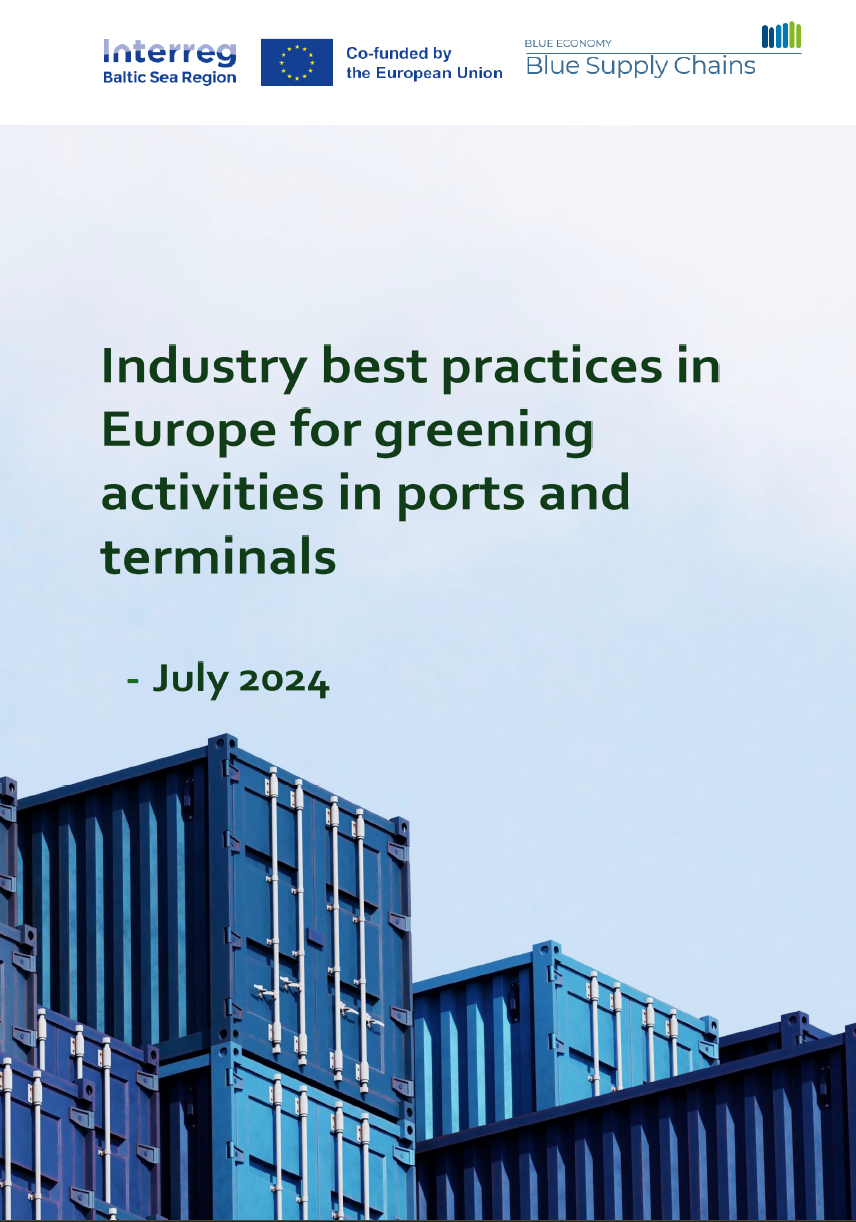
This document offers a comprehensive overview of environmental best practices implemented by ports and terminals across Europe, aiming to mitigate climate change and enhance sustainability in the freight sector. It is part of a broader initiative to identify and promote green investment opportunities and to provide actionable insights for ports and terminals looking to improve their environmental performance.
Objectives and Methodology
The primary goal is to compile a resource that catalogues effective greening strategies, legislative frameworks, and successful initiatives in the maritime sector. The document supports the BSC project’s goal of promoting climate change mitigation and identifying potential areas for green investment. The report is structured into three main tasks, with the first focused on identifying and analysing best practices in greening initiatives at ports and combined transport (CT) terminals. It draws on contributions from key stakeholders and analyses case studies of major ports and terminal operators to illustrate successful approaches.
Key standard-setters in the maritime sector:
- International Maritime Organisation (IMO): Sets global standards for reducing greenhouse gas emissions and other pollutants in the maritime industry, utilising tools like the Energy Efficiency Design Index (EEDI) and the Carbon Intensity Indicator (CII).
- International Association of Ports and Harbours (IAPH): Promotes global best practices and provides tools like the Environmental Ship Index (ESI) to help ports and terminals improve their environmental performance and operational efficiency.
- European Sea Ports Organisation (ESPO): Focuses on sustainable development within EU ports, offering guidelines and programs such as the Green Guide and EcoPorts to help ports develop tailored environmental roadmaps.
- Green Marine Europe: An NGO dedicated to improving environmental sustainability in the maritime sector, particularly through initiatives aimed at reducing emissions and managing environmental impacts.
Case Studies
The document presents in-depth case studies of four leading European ports—Rotterdam, Antwerp, Genoa, and Marseille—and four terminal operators—CFL Terminal, Interporto Bologna, Contargo, and Terminali Italia. These case studies highlight the strategic plans and specific greening initiatives undertaken by these entities, offering a practical reference for others in the sector.

